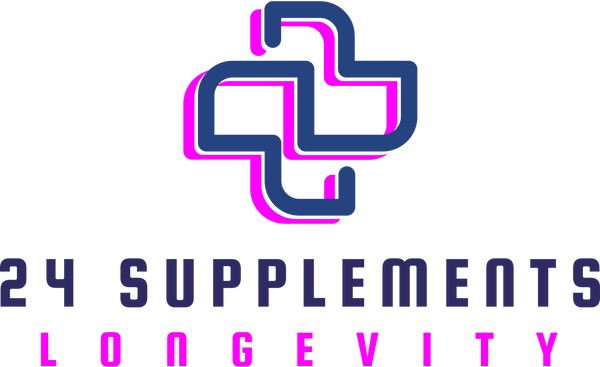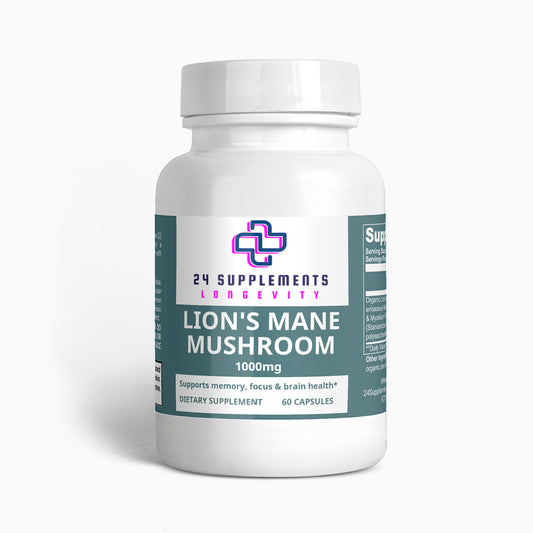
Cannabis in Pain Management: A Comprehensive Review of Current Research
Share
Introduction
Pain management is a critical area of healthcare, and chronic pain affects millions of people worldwide. Traditional pain relief methods, including opioids, often come with significant side effects and risks. Cannabidiol (CBD) and tetrahydrocannabinol (THC), the main compounds in cannabis, have shown promise in alleviating various types of pain. This article reviews current research on the effectiveness of cannabis in pain management, discusses its mechanisms of action, and examines the legal landscape in Europe.
Mechanisms of Cannabis in Pain Relief
Interaction with the Endocannabinoid System (ECS)
The ECS plays a crucial role in modulating pain and inflammation. Cannabis compounds interact with this system in several ways:
-
CB1 and CB2 Receptors: THC binds to CB1 receptors in the brain and nervous system, reducing pain perception. CBD interacts with CB2 receptors found in the immune system, reducing inflammation and pain.
-
Anandamide Regulation: CBD increases anandamide levels, an endocannabinoid that modulates pain and mood, enhancing its pain-relieving effects.
Anti-inflammatory Properties
Inflammation is a common cause of pain. Cannabis's anti-inflammatory effects contribute significantly to its pain-relieving properties:
-
Cytokine Reduction: Cannabis reduces pro-inflammatory cytokines like TNF-α and IL-6.
-
NF-κB Pathway Inhibition: Cannabis inhibits the NF-κB pathway, reducing inflammation and associated pain.
Neuroprotective Effects
Chronic pain often involves nerve damage. Cannabis has neuroprotective properties that help alleviate neuropathic pain:
-
Oxidative Stress Reduction: By scavenging free radicals, cannabis reduces oxidative stress and protects nerves from damage.
-
Neurogenesis Promotion: Cannabis promotes the growth of new neurons, potentially aiding in nerve repair and pain reduction.
Types of Pain Managed by Cannabis
Chronic Pain
Chronic pain, including conditions like fibromyalgia and arthritis, is a major target for cannabis-based treatments:
-
Fibromyalgia: Studies show that cannabis can reduce pain and improve sleep in fibromyalgia patients.
-
Arthritis: Cannabis's anti-inflammatory properties help reduce joint pain and inflammation in arthritis.
Neuropathic Pain
Neuropathic pain, resulting from nerve damage, is challenging to treat with traditional medications. Cannabis offers a promising alternative:
-
Diabetic Neuropathy: Cannabis has shown efficacy in reducing pain and improving quality of life in diabetic neuropathy patients.
-
Multiple Sclerosis (MS): Cannabis can alleviate spasticity and neuropathic pain in MS patients, improving mobility and comfort.
Cancer Pain
Cancer pain### Cannabis in Pain Management: A Comprehensive Review of Current Research
Introduction
Pain management is a critical area of healthcare, and chronic pain affects millions of people worldwide. Traditional pain relief methods, including opioids, often come with significant side effects and risks. Cannabidiol (CBD) and tetrahydrocannabinol (THC), the main compounds in cannabis, have shown promise in alleviating various types of pain. This article reviews current research on the effectiveness of cannabis in pain management, discusses its mechanisms of action, and examines the legal landscape in Europe.
Mechanisms of Cannabis in Pain Relief
Interaction with the Endocannabinoid System (ECS)
The ECS plays a crucial role in modulating pain and inflammation. Cannabis compounds interact with this system in several ways:
-
CB1 and CB2 Receptors: THC binds to CB1 receptors in the brain and nervous system, reducing pain perception. CBD interacts with CB2 receptors found in the immune system, reducing inflammation and pain.
-
Anandamide Regulation: CBD increases anandamide levels, an endocannabinoid that modulates pain and mood, enhancing its pain-relieving effects.
Anti-inflammatory Properties
Inflammation is a common cause of pain. Cannabis's anti-inflammatory effects contribute significantly to its pain-relieving properties:
-
Cytokine Reduction: Cannabis reduces pro-inflammatory cytokines like TNF-α and IL-6.
-
NF-κB Pathway Inhibition: Cannabis inhibits the NF-κB pathway, reducing inflammation and associated pain.
Neuroprotective Effects
Chronic pain often involves nerve damage. Cannabis has neuroprotective properties that help alleviate neuropathic pain:
-
Oxidative Stress Reduction: By scavenging free radicals, cannabis reduces oxidative stress and protects nerves from damage.
-
Neurogenesis Promotion: Cannabis promotes the growth of new neurons, potentially aiding in nerve repair and pain reduction.
Types of Pain Managed by Cannabis
Chronic Pain
Chronic pain, including conditions like fibromyalgia and arthritis, is a major target for cannabis-based treatments:
-
Fibromyalgia: Studies show that cannabis can reduce pain and improve sleep in fibromyalgia patients.
-
Arthritis: Cannabis's anti-inflammatory properties help reduce joint pain and inflammation in arthritis.
Neuropathic Pain
Neuropathic pain, resulting from nerve damage, is challenging to treat with traditional medications. Cannabis offers a promising alternative:
-
Diabetic Neuropathy: Cannabis has shown efficacy in reducing pain and improving quality of life in diabetic neuropathy patients.
-
Multiple Sclerosis (MS): Cannabis can alleviate spasticity and neuropathic pain in MS patients, improving mobility and comfort.
Cancer Pain
Cancer pain, which can be caused by the disease itself or its treatments, is a significant area where cannabis can offer relief:
-
Chemotherapy-induced Pain: Cannabis can alleviate pain caused by chemotherapy, improving patient comfort and quality of life.
-
Palliative Care: Cannabis provides pain relief in palliative care settings, helping manage severe and chronic pain in terminal patients.
Current Research on Cannabis for Pain Management
Recent studies have expanded our understanding of how cannabis can be used to manage pain effectively:
Clinical Trials
Clinical trials are essential for validating the efficacy and safety of cannabis in pain management:
-
Double-blind Studies: Trials where neither the participants nor the researchers know who is receiving cannabis or a placebo have shown significant pain reduction in various conditions.
-
Long-term Studies: Research on the long-term use of cannabis for pain management is ongoing, with initial results suggesting sustained benefits and manageable side effects.
Comparative Studies
Comparative studies between cannabis and traditional pain medications provide insights into their relative effectiveness and safety:
-
Opioid Comparison: Cannabis has been found to be an effective alternative to opioids, with fewer side effects and a lower risk of dependency.
-
NSAID Comparison: Non-steroidal anti-inflammatory drugs (NSAIDs) are commonly used for pain management, but cannabis offers similar pain relief with a better side effect profile.
Legal Landscape in Europe
Netherlands
The Netherlands is known for its progressive cannabis policies, allowing both recreational and medical use:
-
Coffeeshops: Cannabis is sold in licensed coffeeshops under strict regulations.
-
Medical Use: Medical cannabis is available through prescription for various conditions, including chronic pain and multiple sclerosis.
Germany
Germany has one of the most robust medical cannabis programs in Europe:
-
Medical Cannabis: Since 2017, cannabis has been available for medical use with a prescription. The government also covers the cost under health insurance in certain cases.
-
Recreational Use: Currently illegal, but discussions about legalization are ongoing.
Portugal
Portugal has decriminalized all drugs, including cannabis, focusing on harm reduction and treatment:
-
Medical Use: Medical cannabis is legal and can be prescribed for conditions such as chronic pain and PTSD.
-
Decriminalization: Possession of small amounts is treated as a public health issue rather than a criminal offense.
Switzerland
Switzerland has a nuanced approach to cannabis regulation:
-
Low-THC Cannabis: Cannabis with less than 1% THC is legal and widely available.
-
Medical Use: Medical cannabis can be prescribed for certain conditions, and CBD products are widely used for various therapeutic purposes.
United Kingdom
The UK has a restrictive stance on cannabis, but medical use is permitted under specific circumstances:
-
Medical Cannabis: Available by prescription for conditions like epilepsy and multiple sclerosis since 2018.
-
Recreational Use: Remains illegal, with ongoing debates about potential decriminalization.
Implications and Future Directions
The evolving landscape of cannabis research and legislation in Europe has significant implications for public health and medical practice:
Research and Development
Increased funding and support for clinical trials will help solidify the therapeutic potential of cannabis and determine optimal dosing and delivery methods:
-
Standardization: Efforts to standardize cannabis products will improve safety, efficacy, and patient outcomes.
-
New Delivery Methods: Innovations in delivery methods, such as transdermal patches and nanoemulsions, are being developed to improve bioavailability and patient compliance.
Education and Training
Training programs for healthcare providers on the benefits and risks of cannabis can enhance patient care and reduce stigma:
-
Healthcare Providers: Educating healthcare providers on cannabis's therapeutic potential can improve patient outcomes and facilitate informed treatment decisions.
-
Public Awareness: Educational campaigns can inform the public about the safe use of cannabis and its potential health benefits.
Policy and Regulation
Efforts to harmonize cannabis regulations across Europe can facilitate research, improve access to medical cannabis, and reduce legal ambiguities:
-
Harmonization: Harmonizing regulations can streamline research efforts and ensure consistent product quality and safety across countries.
-
Patient Access: Policies that enhance patient access to medical cannabis while ensuring safety and efficacy are crucial for the future of cannabis in healthcare.
Conclusion
Cannabis has significant potential to improve health outcomes for various conditions, from chronic pain and inflammation to neurological and mental health disorders. The current research underscores its therapeutic benefits, while evolving legislation in Europe reflects a growing acceptance of its medical use. As research continues and regulations adapt, cannabis may become an integral part of healthcare, offering new avenues for treatment and improving quality of life for many patients.






























































